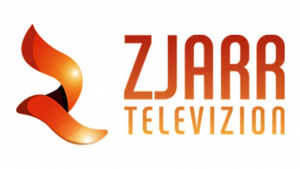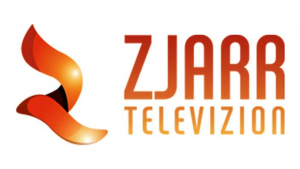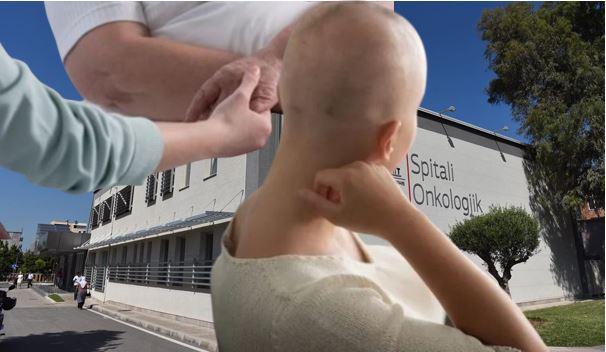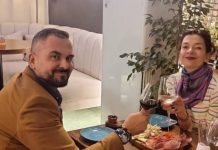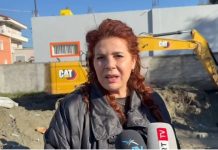Skandali në QSUT është denoncuar prej disa javësh në emisionin “Vetting”. Fakte dhe dëshmi konkrete sollën panoramën e asaj çfarë u tha se u zbulua nga Prokuroria e Tiranës ditën e djeshme. Aty nëpërmjet një rrëfimi të një pacienti u mësua se çfarë ndodhte jo vetëm me ilaçet, por edhe me pajisjet që gjendeshin në spital, por që nuk përdoreshin asnjëherë.
Prokurori i Tiranës, Bledar Valikaj, ka marrë dëshmi tronditëse nga pacientë, të cilët kanë zbuluar akte horror të kryera ndaj pacientëve që vuajnë nga sëmundjet e rënda. Në dosjen e bërë publike janë përfshirë përgjime mes mjekëve, të cilët kanë kryer disa vepra penale për të cilat do të hetohen, por sipas njoftimit të djeshëm, asnjë në arrest me burg. Janë lëshuar 7 urdhra, ndërkohë që gjykata ka vendosur edhe masën e sigurimit. Hetimet do të vijojnë për të konkretizuar aktet e kryera prej tyre.
Prokuroria e Tiranës, përveç skandalit të Onkologjikut, ku pacientët e sëmurë me më tumor i orientonin në spitalet private me qëllim përfitimin monetar, ka zbuluar se në këtë spital është instaluar dhe një aparaturë Kobalto-Terapie. Kjo aparaturë shërben për trajtimin e të sëmurëve të diagnostikuar me sëmundje tomorale dhe sidomos të sëmundjeve të kancerit të lëkurës. Denoncimet e pacientëve kanë zbuluar të gjithë skemën si mjekët dhe personeli që punonte tek Onkologjiku nxisnin pacientët të kryenin vizitat dhe shërbimet në klinikën private “Megis”, që ndodhej tek “Astiri”.
Dosjen e hetuar nga prokurori Bledar Valikaj për të cilën po hetohen mjekë të spitalit të Onkologjikut, por edhe zv.drejtoresha e QSUT. Në hetim është dhe Halil Gashi, administrator i kësaj klinike. Një nga dëshmitarët është dhe M. Xh. nga Burreli, i cili kishte pasur të ëmën me tumor, që pasi kishte shkuar fillimisht për kontroll në QSUT, është transferuar në klinikën private mjekësore “Megis”, ku dhe ka bërë operim të ëmën për 2700 euro. Gjithashtu në këtë klinikë është sugjeruar dhe t’i nënshtrohej kimios, por nuk kanë pranuar.
Ndërmjetës ka qenë Emiljano Lela, koordinator pranë Spitalit Onkologjik në QSUNT, i cili e ka orientuar te doktor Edmond Gashi, mjek pranë Spitalit Onkologjik në QSUNT dhe më pas ky i fundit te klinika “Megis” për të kryer biopsinë pasi në shtet do të kishte vonesa. Pasi ka dalë biopsia, Emiljano kanë bërë pazar për pagesën që do të bëhej për operacionin po në këtë klinikë, e cila është në pronësi të doktorit Edmond Gashit. Nga 3 mijë euro, pagesa do i ulej në 2500 për shkak të ndërhyrjes së tij.
DËSHMIA
Pasi kanë bërë vizitat mjekësore të nënës së tij fillimisht në spitalin e Burrelit, ka rezultuar se dyshohej për sëmundje të keqe, e kanë orientuar drejt Onkologjikut në QSUT, pasi iu është thënë se vetëm aty bëhen vizitat për këto lloj sëmundjesh. E kanë sjellë nënën në Tiranë dhe kanë qenë duke pritur në radhë tek spitali Onkologjik. Kur ka parë në radhë nënën, vëllain dhe bashkëshorten e tij Emiljano i ka dëgjuar nga theksi që ishin nga Burreli dhe iu është afruar duke i thënë se nëse donin do t’i ndihmonte për t’i dërguar tek mjeku dhe në fund të çdo gjëje do të flisnin me Emiljanon.
Pasi i ka marrë dhe i ka dërguar tek mjeku Edmond Gashi, që nuk di të them nëse është i vetmi ose jo që punon tek Onkologjiku, mjeku ka parë vetëm letrat që i kishin sjellë nga Burreli, ka bërë dhe një kontroll sipërfaqësor të nënës dhe ia ka bërë gjendjen alarmante, duke i thënë direkt që duhet të hynte në operim pasi gjendja e saj ishte shumë keq. Po në atë moment i ka thënë që vizitat do t’i bënin në vazhdimësi në Astir tek klinika e tij “Megis”, pasi në spital kishte vonesa, kishte radhë dhe puna gjasme nuk priste. Atë ditë nga QSUT ka shkuar tek klinika “Megis” ku i kanë bërë një biopsi dhe pas atij momenti pas 1 muaj e merr në telefon Emiljano që pasi i prezantohet pasi paraprakisht, kanë shkëmbyer numrat e telefonit me vëllain dhe nusen i thotë se ka dalë përgjigjja e biopsisë dhe se nëna duhet të vinte për të bërë operacionin.
Gjithashtu Emiljano i ka thënë në telefon se pagesa bënte 3000 euro, por për të meqë i rekomandoi Emiljano, do ishte 2500, kur kanë shkuar tek spitali kanë paguar 2700 euro pasi ishin dhe shpenzimet spitalore. Pasi kanë bërë operim nënën, është bërë biopsia dhe kur i dhanë përgjigjen i kanë thënë që sipas doktorit përgjigjja ishte e mirë, nuk ishte tumor i keq dhe s’kishte më nevojë për diçka, ndërsa e kanë dërguar të takonte një doktor tjetër po brenda klinikës që i tha që duhet të bënte kimio! Në atë moment i ka thënë po pse duhet të bëjë kimio kur nëna është mirë dhe doktori ka thënë përgjigjja është OK, i ka dhënë letrat me një fytyrë të ngrysur (pasi nuk i pëlqeu fakti që ka thënë jo për kimiot) dhe është larguar. Doktor Mondi i ka përshkruar një recetë me një medikament të quajtur “Femara 2.5 mg” ku në fillim e ka marrë tek farmacia që ndodhet tek klinika e tij ndërsa më pas e ka blerë normalisht në farmaci në Burrel” thuhet në dosje.
Dëshmitari ka thënë se Emiljano i është afruar vetë nënës gjasme për ta ndihmuar dhe e ka orientuar tek doktori që më pas të shkonin në privat, pasi tani që shohin përgjigjen shprehet se ka kuptuar që gjendja nuk është aq alarmante. Nga shuma prej 2700 euro që është paguar në spitalin privat, ai shprehet se nuk di të thotë sa për qind do të merrte Emiljano, pasi s’ka pasur dijeni si e kanë pasur marrëdhënien dhe ndarjen e gjërave me njëri-tjetrin. I pyetur për faktin nëse Emiljano i ka kontaktuar më pas operacionit ai shprehet se nuk e ka kontaktuar m, dhe nuk e njeh as si fytyrë pasi siç ka theksuar, fillimisht ai ka takuar nusen dhe nënën e tij dhe ka komunikuar vetëm në telefon që e ka orientuar për tek doktori dhe i ka thënë dhe për pagesën.
Në lidhje me praktikën e regjistrimit në QSUT dhe fletëdaljen nga spitali, ai është shprehur se në dijeninë e tij të gjithë letrat janë në QSUT se aty ka shkuar për herë të parë që janë regjistruar dhe nuk e kanë marrë më dosjen, pasi shkuan në privat dhe aty u ngatërrua e gjithë dosja. Ai vendosur në dispozicion një rekomandim të spitalit dhe një recetë të lëshuar Edmond Gashi, e cila mban logon e QSUT.
SI FUNKSIONONTE KLINIKA
Pjesë e skemës ishte Emiljano Lela, doktori i Onkologjikut, Edmond Gashi, administratori i klinikes Halil Gashi dhe mjekja Alketa Ymeri. Emiljano Lela i cili kishte detyrën e koordinatorit në Shërbimin Onkologjik merrte pacientët pa radhë dhe i dërgonte tek mjek tjetër nga ai që ishte rekomanduar dhe konkretisht tek Edmond Gashi. Për pacientët e dërguar tek klinika e Edmond Gashit ai merrte përqindje. Më pas mjeku Edmond Gashi i sugjeronte pacientët të shkonin tek klinika e vet private, duke iu shpjeguar se është radhë e madhe në spitalet shtetërore dhe situate është emergjente.
“Mjeku nuk shkonte tek pacientët që kishte në klinikën e vet private kur lajmërohej nga infermierët se pacienti ka temperaturë duke thënë ‘vari leshtë’ kjo e vërtetuar dhe me interceptimin telefonik të përshkruar më sipër. Nuk u tregon pacientëve që në spitalin e tij privat bëhen vetëm skanerët, biopsia dhe për kimioterapitë dhe për rrezet pacientët duhet të kthehen prapë në spitalin shtetëror. Ky mjek merr kartelat e pacientëve dhe i mban në zyrën e tij kur si rregull duhet të lihen në punktin e kirurgjisë”, thuhet në dosje.
Halil Gashi, i cili ishte administrator i klinikës ‘Megis’ nuk jepte fatura tatimore për operacionet e kryera apo shërbimet e tjera mjekësore të kryera pranë kësaj klinike si skaner, mamografi etj. Gjithashtu mjekët punonin të paregjistruar si rasti i mjekes Aleta Ymeri (Pere) e cila ka firmosur në kartelën e pacientes B.XH, por nuk është mjeke e regjistruar pranë kësaj klinike.
PJESË NGA DOSJA E PROKURORISË TIRANË:
Që kjo pajisje të vendoset në përdorim kërkon që të ketë edhe një ndërtesë në formën e bunkerit, me specifikime të sakta dhe për të mbrojtur nga rrezatimi që lëshon ky burim stafin, ndërtim i cili nuk ekziston në Spitalin Onkologjik por as në QSUNT. Nga stafi është ngritur shqetësimi lidhur me këtë çështje dhe faktin që u soll për trajtime mjekësore por nuk u përdor asnjëherë deri me sot. Për marrjen e të gjithë pajisjeve të cilat nuk janë vendosur në përdorim.
Lidhur me këtë Dr. Adrian Hoti, me detyrë imazherist, ka ngritur vazhdimisht shqetësimin lidhur me këto projekte duke iu drejtuar drejtuesve të shërbimit onkologjike. Për arsye të kësaj situate dhe këtij shqetësimi, dr. Adrian Hoti, pasi parashtroi këtë shqetësim dhe nga drejtuesit e Shërbimit Onkologjik nuk u morë asnjë masë, ai dha dorëheqjen duke u larguar nga puna për arsye të shqetësimit të tij të ngritur në mënyrë të përsëritur lidhur më dëme të mundshme të shëndetit si pasoje e këtyre pajisjeve dhe burimeve me potencialin për të rrezikuar jetën e stafit dhe pacientëve në rast të një incidenti. Në deklarimin e kësaj shtetaseje është përmendur dhe doktori Adrian Hoti, i cili ka deklaruar se në fillim të muajit Shtator të vitit 2021 ka mësuar rastësisht që në dhomën ngjitur kabinetit të radiologjisë ishte vendosur një burim Kobalti 60. Me njohuritë si radiolog dhe si përgjegjës i imazherisë në Spitalin Onkologjik ka takuar shefen e shërbimit Assistencë profesor Silvana Çeliku për të marrë informacion më të saktë mbi situatën.
Elementi kimik Kobalt është artificial, krijohet në mënyrë artificiale mbi nikelin duke e bombarduar me bërthama radioaktive dhe pas këtij procesi Kobalti dhe fiton një veti që është rrezatim i përjetshëm që deri në ditët e sotme nuk është ndërprerë dot si proces. E thënë thjesht ky lloj radioaktiviteti e depërton të gjitha pengesat e zakonshme të aktivitetit normal dhe nuk mund të lejohet të vendoset në ambiente jo specifikë. Përdorimi i saj bazohet mbi disa rregulla ndërkombëtare që përfaqësojnë në vetvete mbrojtjen nga rrezatimi dhe përmblidhen në një terminologji që thirret me emrin Halara. Që të përdoret Kobalto Therapy duhet të krijohet një bunker antiradioaktiv ose antiatomik në kushtet e miratuara dhe të prezantuara nga Agjencia Atomike e Vjenës ose agjencia ndërkombëtare që thirret IEAHEA.
Të gjitha elementët radioaktivë janë të menaxhuara dhe kontrolluara nga kjo agjenci. Me shefen e shërbimit ka komunikuar në lidhje me masat që janë marrë për mbrojtjen nga rrezatimi pasi duhet të ishin vendosur tabela që këtu ka radiacion, duhet të ishte lajmëruar personeli i prezantuar në atë zonë dhe duhej të ishin dorëzuar dozimetria e realizuar në trajtën e një procesverbali nga organet kompetente. Shefja e tij Silvana Çeliku e ka quajtur të tepërt kërkesën e tij si një tejkalim kompetence dhe të panevojshme që problemi të diskutohej me të. Insistimi tij ishte jo në lidhje me përdorimin e aparatit por në fushën e mbrojtjes nga rrezatimi. Dhoma në të cilën ishte dhe është i vendosur aparati është i ndërtuar me material të zakonshëm tull dhe llaç në trashësi 10,20 deri në 30 cm dhe nuk plotëson asnjë nga kriteret që kërkohen për nja ambient të tillë. Kriteret bazë për përdorimin e një terapie radioaktive kërkojnë të paktën mure betoni me peshë specifike të lartë mbi 1 m trashësi dhe pas bisedës me shefen e quajti për detyrë për të komunikuar me instancat drejtuese të spitalit si një emergjencë për të zgjidhur problemin. Ku qëndron rreziku i kësaj situate:
Burimi i kobaltit është i mbështjellë me një kapsulë izoluese që e minimizon në maksimum daljen e pakontrolluar të rrezatimit por brenda kapsulës rrezatimi vazhdon përgjithnjë në mënyrë të vazhdueshme dhe nga gjitha rregullat e vendosura aparate të tilla.
Pas 5 vitesh efikasisteti i për merret burimi duhet të jenë përgatitur gjithë kushtet e tjera teknike dhe nuk është magazinueshëm që ta ruash për më vonë. Mbi të gjitha nuk ka një iguri absolute në kapsulën që e ka mbështjellë. Kështu që në çdo moment mund të ndodhë lëvizje sizmike mund të çajë kapsulën dhe kthehet në gjithnjë në bunker dhe kur mbaron përdorimi një i një aksidenti një burim rrezatues.
Efekti i këtyre rrezeve është në dy plane kur bëjnë rrezatim me doza të mëdha me vetëdije dhe që përdoret në mjekësi që është nekrotizuese dhe rasti tjetër kur e marrim rrezatimin në mënyrë të pavullnetshme me doza minimale ndoshta dhe të pamatshme por me kohë të gjatë. Në këtë rast ndryshimet tek qelizat tona janë në nivel të kodit gjenetik dhe kjo sjell pas disa vitesh shfaqjen e sëmundjeve malinje. Në kushtet që ndodhet sot burimi kobaltit në ambientet e onkologjisë me aparaturat e dozimetrisë që kanë ekzistojnë doza nën vlerat maksimale të lejuara, por sado të vogla të jenë ato, ekzistojnë dhe është një dozë tjetër e shtruar sado e vogël me natyrë radioaktive në një ambient ku ekzistojnë rrezatime të tjera të së njëjtës natyrë dhe kanë vetinë që të shumohen njëra me tjetrën.
Kërkesa e tij drejtuar instancave ka qenë që të bëhet një vlerësim i standardeve të kabinetit të Brachi Terapisë sepse nuk e gjejnë të mbështetur në kushtet ndërkombëtare dhe sigurisht që këto komunikime i kanë me emaile me drejtorin e QSUT, me zyrën e mbrojtjes nga rrezatimi pranë Ministrisë së Shëndetësisë, me ministren e asaj kohe e kësaj dite. Bisedat reflektuan ndjeshmëri por jo në zgjidhjen e situatës. Kërkesa e tij e vazhdueshme ishte që aparati i kobaltit të zhvendosej nga dhoma ku ishte pa mbrojtje në dhomat ngjitur bunker pra të realizohej minimumi i mundshëm që aparati të paktën nga kushtet teknike të mos jetë dëm shkaktues.
Debatet u zhvilluan për afërsisht 1 vit dhe kjo bëri që ai si radiolog të kontaktojë dhe të informohet mbi njohjen që kanë dhe kolegët mbi vetitë e radioterapisë njohjen shkallën e përgjegjësisë që kishin dhe kanë organet drejtuese që megjithëse teorikisht i njohin problemet janë të vetëdijshëm për efektet dëm shkaktuese të aparatit nuk morën masat e nevojshme. Pas përpjekjeve të saj e pa të arsyeshme të vazhdonte aktivitetin e tij si mjek në një vend tjetër dhe sot e kësaj ditë në ambientet e tyre një burim kobalti vazhdon e shkarkohet pa u përdorur, pa u justifikuar për qëllimin për të cilin ka ardhur. Meqenese burimi i kobaltit nuk ka ardhur me rrugë kontrabandë apo natyra të tjera por është blerë nga shteti monitorohet nga shteti edhe është pronë e tij kjo çështje nuk ka një përgjegjës por janë shumë institucione.
HETIMI
I është rimarrë deklarim mjekut Ardian Hoti ku është pyetur nëse nga eksperienca e tij mund të na tregonte se cilat ishin benefitet e trajtimit të të sëmurëve me rreze kobalti që do të zëvendësonte iridiumin është shprehur se pavarësisht se nuk është ekspert në këtë fushë duke u nisur nga parimet e radioterapisë si mjek me eksperiencë në onkologji trajtimi me kobalt sot nuk është mënyra e trajtimit me rreze në brakiterapi apo në përgjithësi.
Radioterapia me kobalt është më dëmtuese duke qenë një rrezatim më i fortë nga sa nevojitet kështu që prej shumë vitesh kjo është zëvendësuar me materialet e tjera siç është iridium i cili kryen efektin njëlloj si kobalti tek sëmundja por lë mundësinë për ruajtjen e indeve të shëndosha nga rrezatimi. Nëse bëjmë një vëzhgim sot në botë harta e vendeve që përdorin kobaltin është e zhvendosur në Indi, Afrikë por jo në pjesën e vendeve që ne pretendojmë se iu përkasim. Nga sa di ai zgjedhja e kobaltit ka qenë një kompromis i drejtuesve të onkologjisë për natyrën e tij që marrja e një natyre kobalti përdoret për 5 vite ndërsa kur marrim një burim iridiumi përdoret vetëm 3 muaj. Për specifikat e vendit tonë duke mos pasur një kontratë afatgjatë të përhershme me institucionet përkatëse ndërkombëtare marrja e iridiumit krijonte ndërprerje të aktivitetit. Për të anashkaluar këtë lloj ngërçi u pranua ose u propozua kobalti.
Aparatura është hequr nga përdorimi për fibrozat që shkakton në our rreze të shkurtër veprimi nuk i jep fibroza. Aty duhet të jenë bërë disa herë matje dhe personalisht debati tij me koleget është për shkak të këtyre matjeve në momentin që i është thënë që ndodhet një burim kobalti pranë kabinetit të radiologjisë ka kërkuar të jepen të dhënat e dozimetrisë paraprake detyrë kjo ligjore e zyrës për mbrojtjen nga rrezatimi. Kjo i është refuzuar nën pretekstin e informacioneve të rezervuara. Me dijeninë e tij aty ka ardhur një ekspert nga Agjencia Atomike e Vjenës pasi është bërë e mundur vënia në punë e aparatit. Gojarisht i është transmetuar pas matjeve të kryera me aparat ndezur dhe pa pacientë pra në ajër dozat nëpër korridoret e Onkologjikut kanë rezultuar rreth 20 herë më të larta se norma e lejuar (të huajt).
Pas kësaj kërkoi një takim me drejtuesit e QSUT ku ti prezantohej raporti dhe të gjithë së bashku të kishin një vendimmarrje sa më të shpejtë për korrigjimin e problematikës. Kërkesa e tij ishte largimi i aparatit nga ambientet e pambrojtura në ambientet e mbrojtura dhe transformimi në një ambient, ashtu siç e kërkojnë standardet normale. Mbledhja u realizua nën drejtimin e nëndrejtoreshës së QSUT Birkena me pjesëmarrjen e shefes së Onkologjikut Silvana, përgjegjësit të radioterapisë dr. Orgest, shefes së biomedikalit pranë QSUT që nuk ia di emrin, administratores së onkologjikut znj. Alketa dhe përgjegjëses për mbrojtjen nga rrezatimi në QSUT së bashku me shefin e radiologjisë Durim Çela ky takim në vend që të jepte zgjidhje duke u bazuar në të vërtetën e fakteve, u kthye në një gjyq ndaj tij pyetja që i drejtohej ishte nëse ishte rrezatuar ose jo dhe kjo pyetje është bëra nga drejtoresha Brikena e përsëritur disa herë që duhet t’i faktonte rrezatimin ose jo.
Që në fillim të takimit kërkoi që mbledhja të protokollohej në mënyrë që gjithsecili të mbante përgjegjësi për çfarë do të thoshte. Kjo detyrë iu la administratores Alketës ndërsa pas disa minutash i rezultoi se nuk po shënohej asgjë. Në prezencë ka qenë e ftuar ish-përgjegjësia e zyrës nga mbrojta nga rrezatimet Xhulja që mbiemrin nuk ia di, e cila është larguar nga puna, surpriza nga ky takim ka qenë nga përgjegjësia e zyrës për mbrojtjen e rrezatimeve në QSUT e cila më nxori një letër që nuk e ka parë të arsyeshme ta lexonte e cila pretendoi që QSUT ishte licencuar që mund të magazinonte mbetjet radioaktive. Pretendimi im në lidhje me burimin e kobaltit që një burim që nuk përdoret aq më tepër në një vend të papërshtatshëm nuk mund të rrijë aty po të dërgohet në vendet specifike.
Nuk ndodh kund që ne të gjejmë një burim radioaktiv që të rrijë aty fizikisht dhe mos shkojë në vendin e destinuar. materia dhje t pyetur nga ana jonë se çfarë kanë humbur pacientët nga mostrajtimi me rreze kobalti, por që vazhdojnë janë vitet 2008-2011 si shërbim brakiterapi dhe kjo me ndërprerje. Me dijeninë e tij kanë ardhur burime iridiumi, është shprehur 50-100 pacientë nëse nevoja për këtë lloj trajtimi, për hir të së vërtetës nga 20 e ca vite që në vendin tonë për vit është afërsisht, ai e njoh onkologjinë është afruar vetëm në me ndërprerje që i takon afërsisht 15 muaj. Në hapësirën tjetër kohore ky shërbim nuk është afruar dhe sot e kësaj dite. Brakiterapia realizon rrezatim në brendësi të organeve në brendësi të trupit dhe konkretisht në intravaginal dhe realizon rrezatim direkt mbi tumorin ose lozhën tumorale, pra është më e drejtpërdrejtë dhe më pak dëm shkaktuese sesa radioterapia e kryer transabdominale.
Nuk kemi një studim konkret të mbarëvajtjes apo të mosvajtjes mirë të pacientëve të trajtuar me rrezatim të zakonshëm apo me brakiterapi, por në tërësinë e kohës është një trajtim i munguar, në praktikën e përditshme mjekët e kanë për detyrë tua thonë pacientëve se çfarë duan kush është më e mira dhe një pjesë e tyre e bëjnë vetë zgjidhjen ashtu si dhe shumë nevoja të tjera duke shkuar në Maqedoni apo vende të tjera të rajonit. Ne nuk mund të themi që praktikisht nëse pacientët kanë humbur ose jo. Kjo duhet bërë me një studim.
Në tërësi brakiterapia është një shërbim i munguar dhe kur u bë zgjidhja për kobaltin nuk është bërë në tërësinë e më të mirës, por e asaj që mundemi të bëjmë dhe kjo sipas mendimit personal të tij i ka shkuar dikujt përshtat. I pyetur mbi matjet e kryera nga ZMR-ja dhe matjet e kryera nga Agjencia Atomike e Vjenës që nxjerrin. Meqenëse mbledhja nuk po protokollohej nuk po flitej për çështjen për të cilën ishim mbledhur e pashë të arsyeshme të largohem nga mbledhja. Ndërsa më vonë, pas disa muajsh, kur unë isha larguar nga Spitali Onkologjik për shkak të mospajtimit të tij me kushtet e punës që po i afroheshin, ka marrë vesh nga kolegë se ka rezultuar ambient i papërshtatshëm as për punë dhe as për mundësi transformimi për bunkerët./panorama.al
